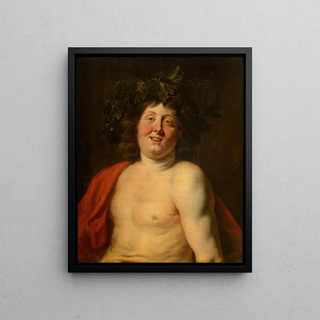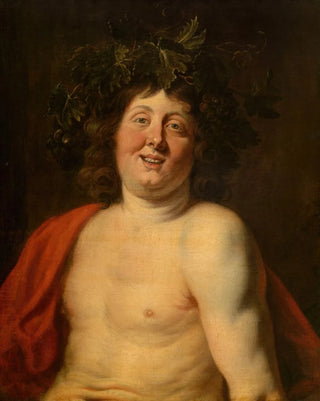Art print | Bacchus - Jacob Jordaens


View from behind

Frame (optional)
Jacob Jordaens' "Bacchus" art print is an iconic piece that embodies the very essence of celebration and exuberance. Painted in the 17th century, this work not only illustrates the pleasures of life but also reflects the artistic traditions of its era. Jordaens, as a Flemish master, manages to capture the spirit of Bacchus, the Roman god of wine, through a vibrant and dynamic representation. The scene is bursting with life, where the characters seem to dance to the rhythm of an invisible music, inviting the viewer to immerse themselves in a universe of joy and conviviality. The radiant light emanating from this art print draws the eye and creates an atmosphere that is both festive and contemplative.
Style and uniqueness of the art print
Jordaens' style is characterized by a masterful use of color and light, which give his works a depth and intensity that are rare. In "Bacchus," warm and golden hues evoke the richness of the harvest and the warmth of celebrations. The characters, with expressive faces, are painted with such liveliness that they seem almost to emerge from the canvas. The composition, rich in detail, is carefully orchestrated, with each element contributing to the overall harmony of the scene. Jordaens does not merely depict mythological figures; he humanizes them, anchoring them in universal emotions that still resonate today. This ability to blend the sacred and the profane makes this art print a timeless masterpiece, celebrating life in all its forms.
The artist and his influence
Jacob Jordaens, a contemporary of Rubens and Van Dyck, stands out for his unique approach to baroque painting. Although influenced by these great masters, he developed a personal style that is entirely his own. His artistic vision, focused on depicting everyday life and mythological themes, marked his era and continues to inspire many artists. Jordaens also played a key role in the evolution of Flemish painting by incorporating elements of realism and movement that foreshadow future movements. His influence extends beyond his time, touching

Matte finish

View from behind

Frame (optional)
Jacob Jordaens' "Bacchus" art print is an iconic piece that embodies the very essence of celebration and exuberance. Painted in the 17th century, this work not only illustrates the pleasures of life but also reflects the artistic traditions of its era. Jordaens, as a Flemish master, manages to capture the spirit of Bacchus, the Roman god of wine, through a vibrant and dynamic representation. The scene is bursting with life, where the characters seem to dance to the rhythm of an invisible music, inviting the viewer to immerse themselves in a universe of joy and conviviality. The radiant light emanating from this art print draws the eye and creates an atmosphere that is both festive and contemplative.
Style and uniqueness of the art print
Jordaens' style is characterized by a masterful use of color and light, which give his works a depth and intensity that are rare. In "Bacchus," warm and golden hues evoke the richness of the harvest and the warmth of celebrations. The characters, with expressive faces, are painted with such liveliness that they seem almost to emerge from the canvas. The composition, rich in detail, is carefully orchestrated, with each element contributing to the overall harmony of the scene. Jordaens does not merely depict mythological figures; he humanizes them, anchoring them in universal emotions that still resonate today. This ability to blend the sacred and the profane makes this art print a timeless masterpiece, celebrating life in all its forms.
The artist and his influence
Jacob Jordaens, a contemporary of Rubens and Van Dyck, stands out for his unique approach to baroque painting. Although influenced by these great masters, he developed a personal style that is entirely his own. His artistic vision, focused on depicting everyday life and mythological themes, marked his era and continues to inspire many artists. Jordaens also played a key role in the evolution of Flemish painting by incorporating elements of realism and movement that foreshadow future movements. His influence extends beyond his time, touching






